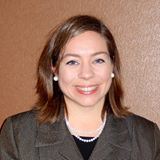engaged teaching
Select an item by clicking its checkbox

Engaging Higher Education: Purpose, Platforms, and Programs for Community Engagement
Date Reviewed: August 23, 2017
The standard perception of higher education in the United States is that it is only for the elite (or those middle-class folks who are willing to take out massive loans to pay for their education). However, the founding concept behind public higher education was to allow all who wish to earn an advanced degree the opportunity to do so. Obviously, the schema appears to have changed.
Financial considerations, admissions standards, and other limitations can produce obstacles to admission. One way to overcome these obstacles is the Community and Technical College system. This system has flourished as a result of offering skills-based training in a number of readily employable fields. Another way to surmount obstacles to higher education, and the one that is the subject of this review, is through community engagement. Community engagement occurs when an institution of higher learning opens its doors to the general public and seeks to partner with them in providing academic and professional training. Community can occur in one of two ways: the institution can seek partnerships with the public through campus events or community service, or the public can seek partnerships with the institution through fieldwork arrangements or training programs. Obviously, this can also be a two-way street where the institution and the community collaborate in the engagement process.
Welch’s volume is based on the Carnegie Foundation’s significant research study on existing community engagement offices at several major American universities and the conceptual writings on community engagement by John Saltmarsh. Welch outlines the purpose of, platforms for, and programs involved with community engagement. The strength of the volume is Welch’s thorough analysis and systematizing of the Carnegie report. However, the volume promises more than that; it promises to provide practical direction for how schools can connect with their community to implement these platforms and programs. This is where the volume falls short of expectations.
As mentioned previously, this book is quite voluminous when it comes to the analysis and quantification of the Carnegie study. And if it had simply stayed there, this would have been an insightful and thought-provoking volume that naturally leads to two other volumes by the same publisher that appear to be connected (Publically Engaged Scholars edited by Post, Ward, Longo, and Saltmarsh, and Community Partner Guide to Campus Collaborations by Cress, Stokamer, and Kaufman). However, the book also attempts to craft an implementation plan for community engagement. It waffles between institutions partnering with community liaisons to provide internships for human services or business students on the one hand and developing institution-based think-tanks that, through strategic partnerships, craft economic and political policy through instructor-student-sponsor relationships on the other. Ultimately, Welch’s volume becomes a never-ending firehose that could lead to bloated institutions scrambling to keep their doors open or to anemic institutions beaten down by unnecessary feelings of academic and professional inferiority.
What do you know to be true now that you used to think was false? What do you know to be false now that you used to think was true? What is something you’ve always thought true that remains true? I once heard a conference presenter ask a version ...
Every time I walk into a classroom or workshop for the first time, I hear the voices of elders in the long, Black-led struggle for justice pressing the questions: “How are you going to bring people into the movement? How are you going to plant the seeds and bring forth ...
I was scheduled to write a blog post on teaching about controversial issues and how they are shaping contemporary Muslim identities in North America. Guessing, however, that many readers may be fatigued from the barrage of unfavorable events – from the U.S. travel ban on citizens of seven Muslim-majority countries ...

Tectonic Boundaries: Negotiating Convergent Forces in Adult Education (New Directions for Adult and Continuing Education, Number 149)
Date Reviewed: January 30, 2017
This slender volume presents a collection of essays examining concerns for adult education. The first chapter frames the problem with the concept of “liquid modernity,” which is the idea that structures such as family, occupation and career, and social life are fluid in an unprecedented way (12). Education and informal learning serve learners if they teach them how to navigate complex contexts and to recognize and adapt to changing circumstances. The metaphor of “tectonics” is used to describe forces which are sometimes convergent, divergent, and/or transformative in adult learner’s lives (93). This metaphor underscores the paradox that for adult learners, education needs to complement the structures of their lives while at the same time responding to the modern world’s shifting demands.
Other chapters explore various contexts of adult learning. Chapter Two discusses the concerns of adults learning English as a second language. As immigrants, these learners are in transition, adjusting to new circumstances and a new culture. In order to make their education meaningful and engage them in learning, the authors describe strategies of using prompts to get students speaking and writing about their lives and their experiences to practice English, to engage students, and make their education meaningful (25). Chapter Three describes the growth of job clubs among communities of African-American women. These clubs are often attached to other institutional social networks in their lives, such as faith-based communities. These networks facilitate informal learning by providing tips and resources for members to update their skills. Chapter Four addresses education for the dissemination of health information, describing interrelated cultural, social, and economic factors that impinge on health education and which in turn impact health care outcomes. Chapter Five takes the digital native versus digital immigrant divide to examine intergenerational differences in approaching education. The challenge for educators is to design educational content which engages natives yet is also friendly and inviting for immigrants, and to shift the mode of adult education from thinking about teaching to thinking about learning. Chapter Six describes the significance of the ancient art of storytelling, not just to preserve culture, but to evoke and shape the meaning of life experiences for adult learners. Chapter Seven begins with the context of a post-recession economy in which low-skilled workers are increasingly vulnerable. This context provides the foundation for a discussion of the role of adult education: to build human capital, to make better citizens, and to enrich the course of learner lives. Chapter Eight outlines problems of delivery, credit, and accreditation that result from the tectonic shifts of the modern digital age. These shifts include such varied educational modes and attainments as badges, MOOCs, and "direct assessment competency-based programs" (87).
The book’s strength rests in its ability to point to the concerns that frame contemporary adult education, although it does not describe pedagogical strategies in an equally consistent fashion. The book ends with the important reminder that in adult education, negotiation is key. Adaptability and flexibility complement the issue of fluidity. Good pedagogy meets learners where they are and recognizes their needs and concerns.


